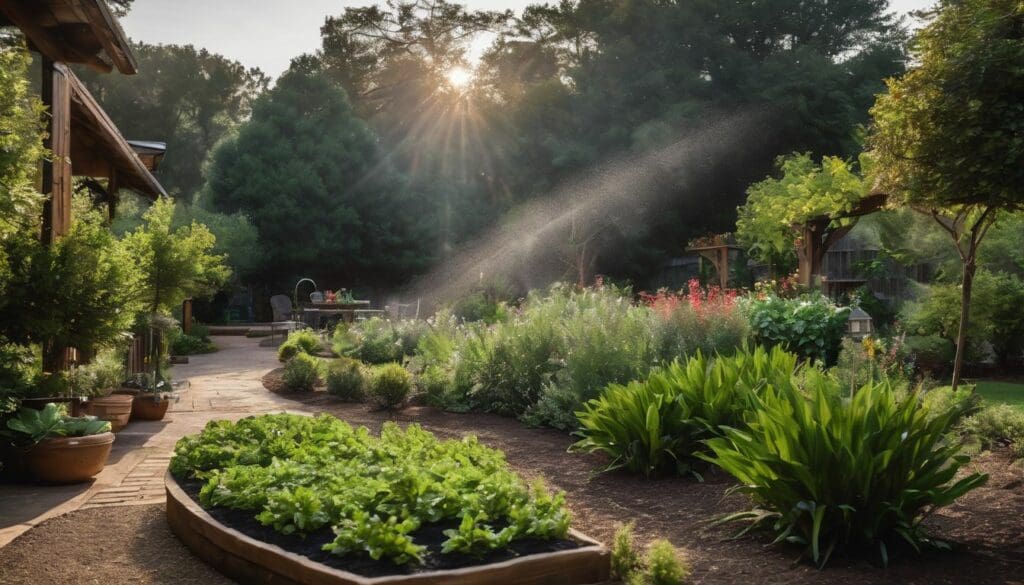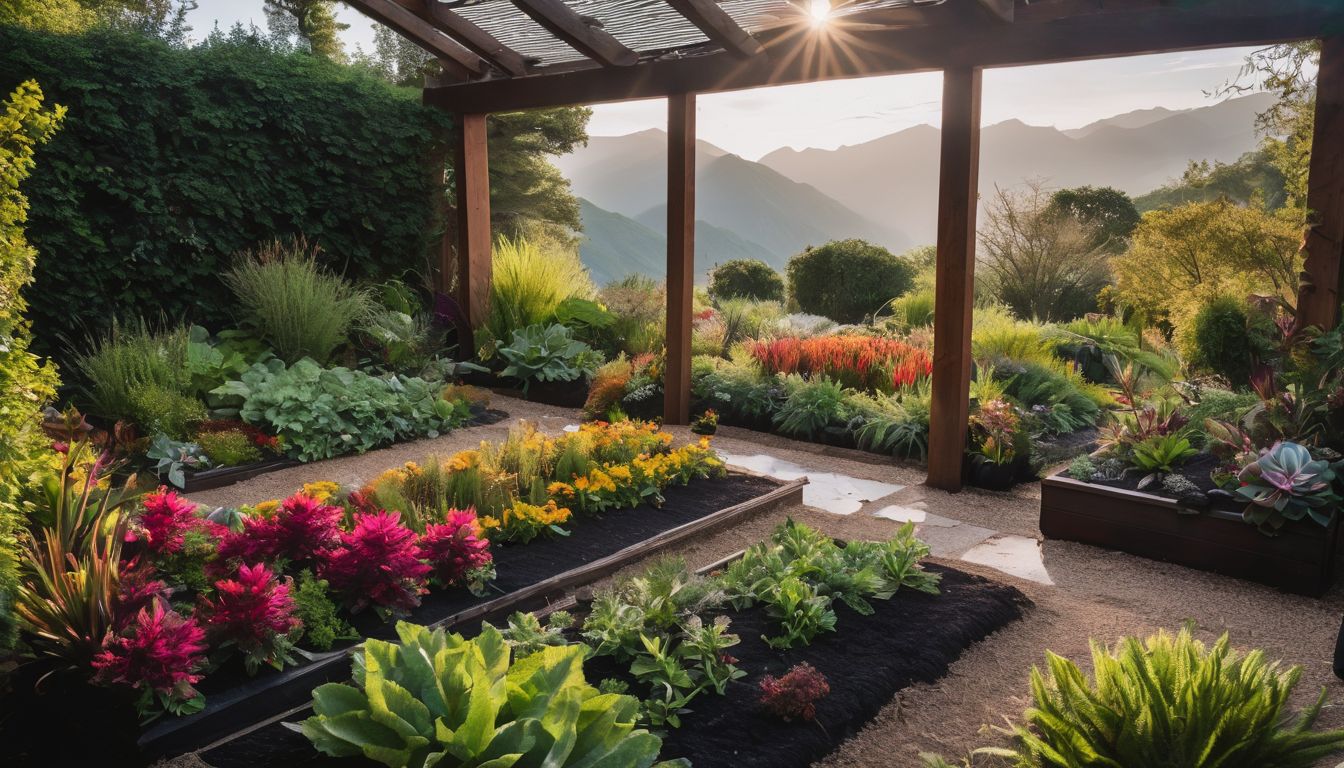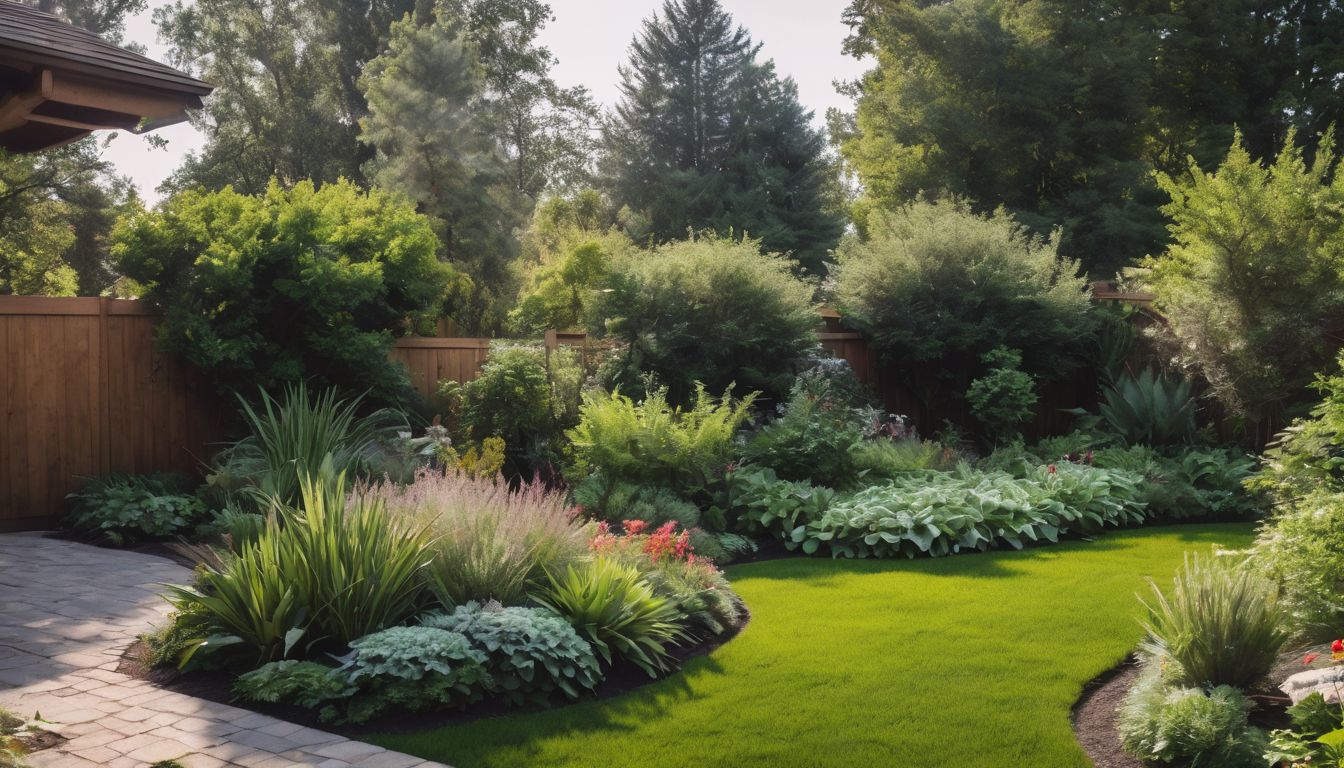Gardens thirst for water, but so does our planet. Did you know that up to 50% of domestic water use goes into lawns and gardens? This article guides you through watering methods that quench your garden’s thirst sustainably, saving precious H2O.
Dive in and make every drop count!
Key Takeaways
- Choosing native and drought – resistant plants for your garden can save water since they’re adapted to local climate conditions and require less frequent watering.
- Employing mulch in your garden beds helps retain soil moisture, reduces the need for constant watering, mitigates weed growth, and protects plant roots from temperature extremes.
- Drip irrigation systems deliver water directly to plant roots with high efficiency, cutting down on waste and conserving this vital resource compared to traditional sprinklers or hose-end methods.
- Installing a rain barrel to collect rainwater provides an eco – friendly supply of water for your garden that doesn’t impact your water bill or deplete community resources.
- Watering lawns with low – angle sprays early in the morning minimises evaporation losses and ensures that more water reaches grass roots where it’s needed most.
Reduces water waste
Reduce water waste by implementing sustainable watering practices. Using absorbent soil and investing in efficient watering systems can significantly minimise water wastage in your garden.
Employing drip irrigation and utilising low-angle spray for lawns are effective ways to ensure that every drop of water is utilised effectively, reducing waste and supporting conservation efforts.
By incorporating these sustainable practices into your gardening routine, you can make a positive impact on the environment while maintaining a healthy and thriving garden. Furthermore, choosing water-efficient plants suited to your region’s climate will contribute to reducing water waste while ensuring the vitality of your garden.
Sustainable Gardening Techniques for Watering
Use absorbent soil to retain moisture, water the right amount at the right time to avoid overwatering, invest in the best watering systems for efficiency and effectiveness, and consider options for reusing water and collecting rainwater.
Water the right amount at the right time
Now that you have established absorbent soil, it’s vital to water your garden at the right time and in the right amounts. Adequate moisture is crucial for plant growth, but overwatering can lead to root rot and other issues.
Water deeply but infrequently to encourage deeper root systems and drought resistance in your plants. Early morning watering when temperatures are cooler helps minimize evaporation, ensuring that water reaches the roots where it’s needed.
Consider investing in a rain gauge to measure rainfall accurately so you can adjust your watering schedule accordingly. Furthermore, utilizing drip irrigation or soaker hoses delivers water directly to the base of plants, minimizing evaporation and ensuring efficient use of water resources.
Invest in the best watering systems
Choose the best watering systems for your garden to ensure efficient use of water. Drip irrigation and soaker hoses are effective options that deliver water directly to plant roots, minimizing evaporation and preventing water wastage.
Consider installing a rain barrel to collect rainwater for later use in your garden, reducing reliance on mains water supply.
Selecting a well-designed sprinkler system is crucial; look for models with adjustable settings to suit different plant types and soil moisture levels. Opt for timers or smart irrigation controllers that automate watering schedules based on weather conditions, ensuring plants receive just the right amount of hydration without overwatering.
Benefits of Sustainable Watering for Your Garden
Healthier plants thrive in a sustainable watering environment, leading to more vibrant blooms and better produce. Not only does sustainable watering save you money on irrigation costs, but it also reduces maintenance by promoting natural growth and resilience in your garden.
Healthier plants
Sustainable watering practices lead to healthier plants in your garden. By conserving water and using it efficiently, you can provide the necessary hydration for your plants without overwatering them.
This promotes stronger root systems and improves their resilience against diseases and pests. Using absorbent soil and watering at the right time will also help maintain optimal moisture levels, supporting the overall health of your plant life.
Investing in efficient irrigation systems and incorporating rainwater harvesting further contributes to healthier plants by ensuring they receive clean, natural water free from harmful chemicals.
Saves money
By implementing sustainable watering practices, you can save money on your gardening expenses. Using techniques like drip irrigation and mulching helps reduce water usage and minimizes the need for costly maintenance.
Additionally, planting native species and investing in energy-efficient watering systems can lower your utility bills while promoting a more eco-friendly garden environment. Implementing these cost-effective methods not only benefits your wallet but also contributes to overall environmental conservation efforts.
In addition to benefiting the environment, sustainable watering practices for your garden offer significant financial savings. By incorporating techniques such as using absorbent soil and collecting rainwater, you can reduce the amount of water needed for your garden, resulting in lower water bills.
Tips for Sustainable Watering in the Garden
To ensure sustainable watering in your garden, consider planting native species and using mulch to retain moisture. Incorporating drip irrigation and using low-angle spray for lawns can also help conserve water and maintain a healthy garden environment.
Plant native species
Choose native species for your garden to support local biodiversity. Native plants are well adapted to the climate and soil conditions, requiring less water and maintenance. By planting native species, you can create a sustainable ecosystem that attracts beneficial insects and wildlife, contributing positively to the environment.
Additionally, native plants help conserve water and reduce the need for chemical inputs, making them an eco-friendly choice for any garden.
Incorporate drought-resistant plant varieties in your garden landscape design to foster a sustainable approach to gardening. Drought-tolerant natives thrive with minimal watering, promoting water conservation in your outdoor space while adding natural beauty.
Mulch your garden
Mulching your garden is a simple yet effective way to promote sustainable watering practices. Applying mulch around plants helps retain moisture in the soil, reducing the need for frequent watering.
This not only conserves water but also promotes healthy plant growth by providing a protective barrier against extreme temperatures and minimising weed competition.
Organic materials such as wood chips, straw, or compost can be used as mulch to improve soil health and reduce evaporation. Additionally, mulch enhances soil structure and fertility while preventing erosion, making it an eco-friendly choice for environmentally conscious individuals looking to support conservation efforts in their gardens.
Use low-angle spray for lawns
Low-angle spray is an effective way to water lawns, ensuring that the water reaches the roots without excessive evaporation. This technique distributes water evenly and reduces runoff, promoting healthier grass while conserving water.
By using low-angle spray for your lawn, you can support eco-friendly gardening practices by minimising water waste and contributing to sustainable landscaping efforts.
Incorporating low-angle spray into your garden watering routine not only benefits the environment but also saves money on utility bills and promotes the health of your lawn. This method aligns with water-efficient landscaping techniques and supports a more sustainable approach to outdoor water usage.
Conclusion
In conclusion, sustainable watering practices for your garden are essential. Incorporating eco-friendly gardening techniques helps conserve water and reduce waste. By investing in the right watering systems and implementing efficient methods, you can enjoy a healthier garden while benefiting the environment.
FAQs
1. What are sustainable watering practices for my garden?
Sustainable watering practices include using eco-friendly irrigation methods, selecting drought-resistant plants, and employing soil moisture retention techniques to conserve water in your garden.
2. How can I make my gardening more eco-friendly?
You can adopt energy-efficient gardening by opting for native plant species that require less water and incorporating organic gardening principles to enhance the health of your soil.
3. What is xeriscaping and how does it help save water?
Xeriscaping involves designing a landscape with drought-resistant plants and permeable paving to minimise the need for irrigation, making your garden more efficient in water use.
4. Can native plant species really improve my garden’s sustainability?
Yes, choosing native plant species contributes to eco-friendly gardening as they are adapted to local climate conditions, often requiring less water compared to non-native varieties.





